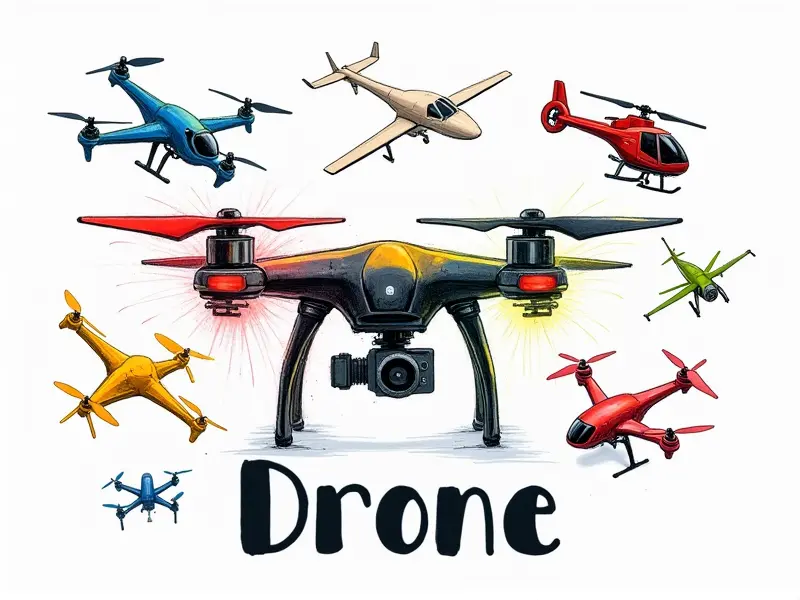Drone FPV setup tips?

Top 5 Must-Have Components for FPV Setup
First-time FPV drone enthusiasts often find themselves overwhelmed by the myriad of components available in the market. To ensure a smooth and enjoyable experience, it's crucial to focus on the essential elements that form the backbone of your setup.
1. High-Quality Video Transmitter (VTX)
A reliable VTX is vital for transmitting clear video signals from your drone to your goggles or monitor. Look for a model with adjustable power output and frequency bands, such as the Runcam Split 2 or TBS Unify Pro X.
2. FPV Goggles
Your choice of goggles will significantly impact your flight experience. Opt for models like the FatShark Dominator HD2 or Crossfire V3 that offer excellent image quality, wide field of view, and comfortable fit.
3. Camera and Lens
The camera is responsible for capturing the video feed. A popular choice among FPV pilots is the GoPro Hero series, paired with a wide-angle lens like the 12mm or 16mm to ensure you have a clear view of your surroundings.
4. Antenna
A good antenna enhances signal strength and range. Consider using directional antennas for longer-range flights and omnidirectional antennas for shorter, more maneuverable setups.
5. Flight Controller (FC)
The FC is the brain of your drone, controlling all its functions. Choose a model with advanced features like telemetry support, such as the Betaflight-compatible Naze32 or Pixhawk.
Beginner's Guide to Setting Up FPV Drones
Setting up an FPV drone can be daunting for beginners, but with these step-by-step instructions, you'll have your setup ready in no time. Follow this guide to ensure a smooth and enjoyable experience:
Step 1: Assemble the Frame and Motors
- Select a frame that suits your needs (size, weight).
- Install motors and ESCs securely.
- Connect power wires to the battery connector.
Step 2: Install Flight Controller and GPS Module
- Mount the FC on the frame.
- Attach a GPS module for better stability during flights.
- Connect telemetry wires to the FC if supported.
Step 3: Add Camera and VTX
- Mount your camera on the frame, ensuring it's level.
- Attach the VTX near the camera for optimal signal transmission.
- Connect power wires to the FC or ESCs.
Step 4: Install Antenna and Connectors
- Mount a directional antenna on top of your frame.
- Attach an omnidirectional antenna near the VTX for ground control.
- Connect all necessary wires to ensure proper signal transmission.
Maximize Your FPV Experience with These Tips
To get the most out of your FPV drone, follow these tips:
1. Optimize Video Quality
- Increase VTX power output for better range.
- Adjust camera settings to enhance image clarity and contrast.
2. Enhance Flight Stability
- Tune your FC parameters for optimal performance.
- Use a GPS module to maintain stable flight paths.
3. Improve Signal Strength
- Position antennas correctly for maximum range and clarity.
- Reduce interference by using different frequency bands.
Quick Start: FPV Drone Setup Checklist
Before you start flying, make sure to check off these items:
- Frame Assembly: Motors and ESCs installed securely.
- Flight Controller: FC mounted with GPS module connected.
- Camera & VTX: Camera level, VTX attached near camera.
- Antennas: Directional and omnidirectional antennas installed correctly.
- Battery: Properly charged battery connected to FC or ESCs.
DIY FPV Setup Guide for Budget-Friendly Builds
If you're looking to build an FPV drone on a budget, follow these steps:
1. Choose Affordable Components
- Select entry-level VTX and camera models.
- Purchase a basic flight controller with essential features.
2. Optimize for Performance
- Tune your FC to balance performance and stability.
- Use standard antennas instead of high-end models.
3. Test Thoroughly Before Flying
- Conduct ground tests to ensure all components are functioning correctly.
- Perform short flights in a safe area before venturing out.
Boost Your FPV Range with Simple Tweaks
To extend your FPV range, consider these adjustments:
1. Increase VTX Power Output
- Raise the power level to boost signal strength.
- Monitor battery consumption and adjust accordingly.
2. Use High-Quality Antennas
- Install directional antennas for long-range flights.
- Utilize omnidirectional antennas for ground control.
3. Optimize Frequency Band Usage
- Select less crowded frequency bands to reduce interference.
- Use 5.8GHz band for longer range and clearer signals.
Optimal Antenna Placement for Clear FPV Video
The placement of your antennas plays a crucial role in signal quality:
Directional Antennas
- Mount on top of the frame, aligned with the VTX.
- Avoid obstructions that may interfere with signals.
Omnidirectional Antennas
- Attach near the VTX for ground control.
- Ensure proper orientation to maximize coverage.
Essential Gear for Perfect FPV Drone Setup
To achieve a flawless setup, invest in these essential tools:
1. High-Quality Batteries
- Choose batteries with high discharge rates and capacity.
- Ensure proper charging and maintenance for longevity.
2. Reliable Ground Control Station
- Use a robust ground control station for stable signal transmission.
- Install omnidirectional antennas near the VTX for optimal coverage.
3. Comprehensive Testing Equipment
- Purchase testing equipment to ensure all components are functioning correctly.
- Conduct thorough tests before flying to avoid malfunctions.
Conclusion
By following these guidelines and tips, you can achieve a top-notch FPV drone setup that delivers exceptional performance and reliability. Remember to test thoroughly and make adjustments as needed to optimize your experience.

